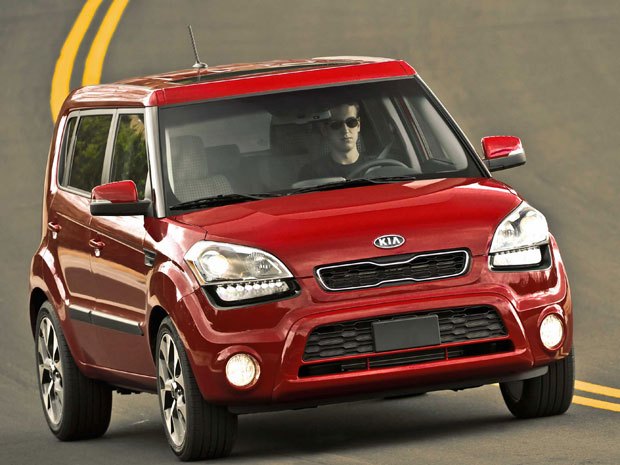By Paul A. Eisenstein, msnbc.com contributor
It’s automotive award season, so expect to see a lot of commercials touting cars, trucks and crossovers that are “best” in one category or another.
But few trophies carry the heft and credibility of the one that will be handed out following the opening ceremony of next week’s 2012 Detroit auto show.
Unlike most automotive awards, the winners of the North American Car and Truck of the Year (“NACTOY”) are decided by a panel of 50 U.S. and Canadian journalists. The methodology is designed to make sure that no single media outlet’s editorial — or advertising — policies influence the verdict.
The widely regarded, and oft-quoted, NACTOY is something most manufacturers actively and aggressively seek, so even landing among the finalists is considered a major victory — or a serious setback if you’re left off the list.
And, for the first time in quite a while, there are no Japanese autos among the finalists for North American Car of the Year — a potentially significant development when the major Asian carmakers seem more vulnerable than they have been in decades.
The car-of-the-year finalists — the Ford Focus, the Hyundai Elantra and the Volkswagen Passat — are nonetheless an international bunch. But surprisingly absent are two particular models that would, in years past, have been absolute shoe-ins, at least for inclusion among the finalists: the 2012 remakes of the Honda Civic and the Toyota Camry.
The choice of an American, Korean and a German car “reflects the fact that every manufacturer is getting better these days,” suggested Joe Phillippi, chief analyst with AutoTrends Consulting. At the same time the Civic and Camry “certainly don’t break new ground,” he said.
They’ve both taken a fair share of criticism in recent months. Honda’s CEO Takanobu Ito has promised to rush a major update of the new Civic to market as soon as possible. This will likely happen sometime in 2013, years before a replacement or even a mid-cycle freshening would normally be expected. The latest Civic came to market only last spring.
It’s difficult to say exactly how important winning a NACTOY trophy is beyond the bragging rights, though Ford President of the Americas Mark Fields described it as “a huge marketing opportunity for us and [one] we [would] definitely use to our advantage.”
It would also serve as “significant validation,” he added, for the carmaker’s One Ford strategy, which has seen a shift away from developing separate products for individual regions of the world in favor of a single product, like the Focus, that can be tweaked slightly to meet the needs of specific markets.
Since about 80 percent of the components on a Focus are shared in all regions, that means much greater economies of scale. In turn, explained Fields, the strategy allows Ford to come up with a compact model that is not just more attractive, but also more lavishly equipped than past small car offerings.
That has proved particularly critical considering the growth of the compact segment. It’s one of the largest niches worldwide and among the fastest-growing in the U.S. as American buyers downsize to reduce their fuel bills.
In decades past, the compact segment was filled with boring and sparsely equipped “econoboxes.” Hyundai pitched its offerings by focusing on rock-bottom pricing. No longer. The Hyundai Elantra that is the second of the three NACTOY Car-of-the-Year finalists is a strikingly attractive and well-equipped offering that is helping the Korean carmaker transform its once-stodgy image.
No wonder, according to Dave Sullivan of AutoPacific: “The Koreans have clearly gained the respect of the Japanese as worthy competitors.”
If the Elantra were to win, it would be just the second NACTOY victory for the Koreans. The original Hyundai Genesis, the carmaker’s first foray into the luxury market, won four years ago.
The third contender for North American Car of the Year is perhaps the most “plain vanilla” when it comes to design, suggests long-time automotive author and analyst Mike Davis.
But it is no less significant. The 2012 Volkswagen Passat is the centerpiece of the German automaker’s plan to more than double its U.S. sales by 2018 — and to become the world’s largest automaker by that date.
Significantly, the American Passat is bigger than the European version of the sedan — so large is its interior tha it actually slips into the full-size category, with enough room for a squad of NBA players front and back. While it may not boast the edgy styling of the Focus or Elantra, the new midsize Passat is equally well-equipped and, perhaps most significant for buyers, it comes at a price tag thousands less than the model it replaced.
It’s also the first new product to roll out of VW’s new assembly plant in Chattanooga, Tenn.
A quick survey of the 50 NACTOY jurors suggests it will be a close race, with the Passat given an ever-so-slight edge.
As for the truck side of the NACTOY balloting, there’s another big surprise, with not a single American offering in the mix. But that is more a reflection of the unusually small number of light truck models introduced over the last 12 months.
Ironically, then, Honda has landed a spot among the three finalists with its newly-updated CR-V crossover, with the other spots filled by the redesigned BMW X3 and Land Rover’s first-ever car-based crossover, the Range Rover Evoq.
The winners of the North American Car and Truck of the Year will be announced following the ribbon cutting at Detroit’s Cobo Center next Monday.
Read More Here: http://bottomline.msnbc.msn.com/_news/2012/01/03/9922924-automakers-vying-for-top-honors-at-detroit-auto-show
 By Zach Bowman
http://www.autoblog.com/2013/03/21/younger-buyers-leaving-japanese-for-south-korean-american-brand/
By Zach Bowman
http://www.autoblog.com/2013/03/21/younger-buyers-leaving-japanese-for-south-korean-american-brand/



